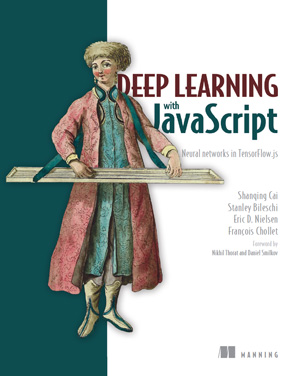
出版时间:2020.1
官网链接:Manning
下载地址:百度网盘(PDF+EPUB+MOBI)
提取码 :qt3h
内容简介:
Deep learning has transformed the fields of computer vision, image processing, and natural language applications. Thanks to TensorFlow.js, now JavaScript developers can build deep learning apps without relying on Python or R. Deep Learning with JavaScript shows developers how they can bring DL technology to the web. Written by the main authors of the TensorFlow library, this new book provides fascinating use cases and in-depth instruction for deep learning apps in JavaScript in your browser or on Node.
about the technology
Running deep learning applications in the browser or on Node-based backends opens up exciting possibilities for smart web applications. With the TensorFlow.js library, you build and train deep learning models with JavaScript. Offering uncompromising production-quality scalability, modularity, and responsiveness, TensorFlow.js really shines for its portability. Its models run anywhere JavaScript runs, pushing ML farther up the application stack.
about the book
In Deep Learning with JavaScript, you’ll learn to use TensorFlow.js to build deep learning models that run directly in the browser. This fast-paced book, written by Google engineers, is practical, engaging, and easy to follow. Through diverse examples featuring text analysis, speech processing, image recognition, and self-learning game AI, you’ll master all the basics of deep learning and explore advanced concepts, like retraining existing models for transfer learning and image generation.
what’s inside
- Image and language processing in the browser
- Tuning ML models with client-side data
- Text and image creation with generative deep learning
- Source code samples to test and modify
about the reader
For JavaScript programmers interested in deep learning.
about the author
Shanging Cai, Stanley Bileschi and Eric D. Nielsen are software engineers with experience on the Google Brain team, and were crucial to the development of the high-level API of TensorFlow.js. This book is based in part on the classic, Deep Learning with Python by François Chollet.